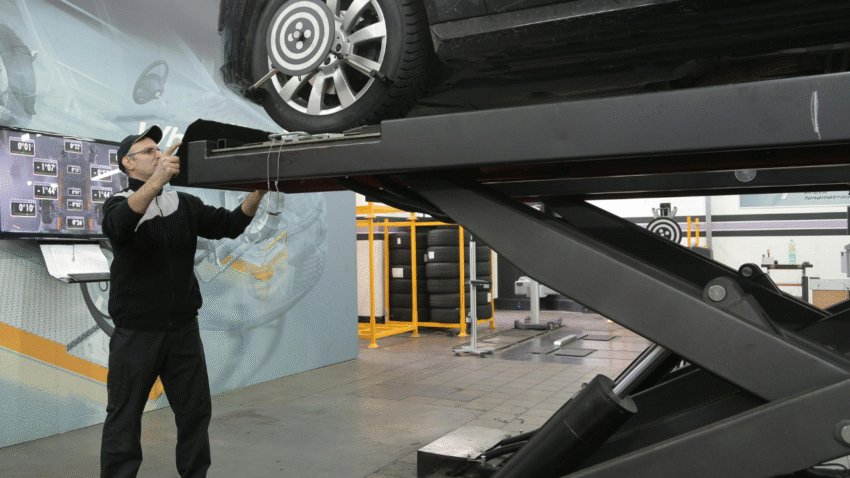Introduction
A rattling garage door can be annoying, distracting, and even a sign that something’s wrong. Whether it happens when opening, closing, or during windy days, these noises can disrupt your peace and indicate potential maintenance issues. Learning how to stop garage door rattling noises will not only restore quiet but also extend the life of your door and its components. With a few simple adjustments and maintenance steps, you can keep your garage door operating smoothly year-round.
Why Fixing Garage Door Rattling Matters
While the noise itself is unpleasant, ignoring rattling can lead to bigger problems over time:
- Prevent damage – Loose components can wear out faster.
- Improve safety – A noisy door might indicate parts that could fail unexpectedly.
- Increase home comfort – Reduce noise levels for living spaces near or above the garage.
- Enhance efficiency – A well-maintained door moves more smoothly, reducing strain on the opener.
Using basic garage maintenance tools like a wrench set, screwdriver, lubricant, and weatherstripping can help you address rattling quickly and effectively.
Step-by-Step Guide to Stopping Garage Door Rattling Noises
1. Identify the Source of the Noise
Start by operating the door slowly while listening closely. Rattling can come from:
- Loose nuts, bolts, or screws on the tracks and hinges.
- Worn rollers or bearings.
- Unbalanced door springs.
- Loose opener chain or belt.
- Damaged weatherstripping or panels.
Pinpointing the exact cause will save you time and prevent unnecessary repairs.
2. Tighten All Hardware
Over time, vibrations from regular use loosen bolts, screws, and brackets.
- Use a wrench or socket set to tighten all nuts and bolts on the tracks, hinges, and brackets.
- Check the mounting hardware for the opener as well.
- Avoid overtightening, which can strip threads or damage components.
Tip: Wear safety goggles when working around metal hardware to protect your eyes.
3. Inspect and Replace Worn Rollers
Old or damaged rollers can create significant noise.
- Nylon rollers are quieter than steel and require less maintenance.
- Replace rollers that show cracks, chips, or excessive wobble.
- Avoid replacing the bottom roller yourself if it’s connected to the lift cable—this is best left to a professional for safety reasons.
4. Lubricate Moving Parts
Proper lubrication reduces friction and noise. Use a garage door-specific silicone or lithium-based spray on:
- Hinges
- Springs (torsion or extension)
- Rollers (avoid spraying the roller tracks directly)
- Opener chain or belt (light coat only)
Wipe away excess lubricant to prevent dust buildup.
5. Adjust the Opener Chain or Belt
A loose opener chain or belt can slap against the rail, causing rattling.
- Follow the manufacturer’s instructions to tighten it—usually, it should have about 1/4-inch slack midway along its length.
- Avoid overtightening, which can strain the motor.
6. Check for Track Alignment Issues
Misaligned tracks can cause the door to shake and rattle as it moves.
- Disconnect the opener so you can move the door manually.
- Check that both vertical and horizontal tracks are parallel and properly spaced.
- If the misalignment is significant, call a professional—adjusting tracks incorrectly can cause more damage.
7. Inspect and Replace Weatherstripping
Worn or loose weatherstripping can flap or vibrate in the wind, adding to rattling noises.
- Replace cracked or brittle weather seals.
- Ensure the bottom seal is snug against the floor to minimize vibrations.
8. Balance the Garage Door
An unbalanced door puts extra strain on all components and can cause rattling.
- Disconnect the opener and lift the door manually halfway.
- If it doesn’t stay in place, the springs may need adjustment—a task best handled by a trained technician due to high tension.
9. Add Anti-Vibration Pads
If the noise is coming from the opener itself, install rubber anti-vibration pads under the opener’s mounting points to absorb sound and reduce rattling transfer to the ceiling joists.
Common Mistakes to Avoid
- Skipping Regular Maintenance
- Problem: Small issues turn into major repairs.
- Solution: Inspect and maintain your garage door every six months.
- Using the Wrong Lubricant
- Problem: WD-40 and similar products can strip away necessary lubrication.
- Solution: Use silicone spray or white lithium grease specifically for garage doors.
- Overtightening Hardware
- Problem: Can strip threads or crack brackets.
- Solution: Tighten just enough to secure components without forcing.
- DIY Spring Adjustments Without Experience
- Problem: Garage door springs are under extreme tension and can cause serious injury.
- Solution: Leave spring work to professionals.
- Ignoring Chain/Belt Slack
- Problem: Leads to increased vibration and wear on the opener.
- Solution: Keep it within the manufacturer’s recommended tension.
Extra Garage Tips & Hacks
- Upgrade to a Belt-Drive Opener – Quieter than chain drives, ideal for homes with living space above the garage.
- Install Insulated Panels – Adds weight stability and reduces noise from vibrations.
- Use Foam Weatherstrip Tape – Place between metal-to-metal contact points to muffle sound.
For more noise-reduction ideas, check out our guide on upgrading your garage door for better performance to combine silence with smooth operation.
Conclusion
A rattling garage door isn’t just a nuisance—it’s a signal that something may need tightening, lubricating, or replacing. By inspecting, adjusting, and maintaining your door regularly, you can stop those irritating noises and enjoy a quieter, more efficient garage.
Pro Tip: Keep a small garage maintenance kit with lubricants, wrenches, and spare weatherstripping so you can address rattling at the first sign, preventing bigger repairs later. Bookmark this guide to keep your garage door operating smoothly year-round.
